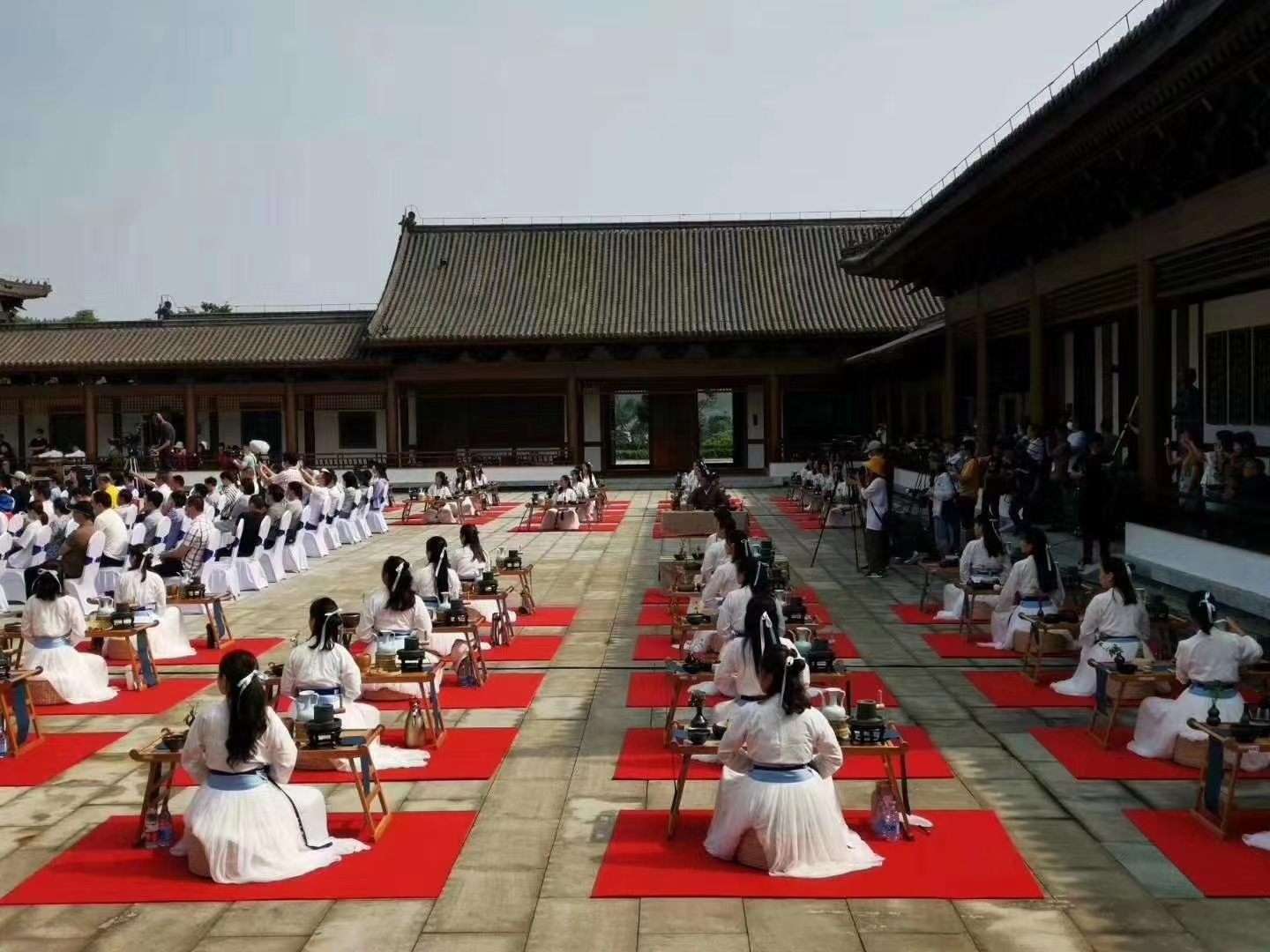Tea industry news for the week of May 25.
- International Tea Day
- Angela Lansbury as teapots
- India COVID-19 Update
- Matcha in Demand

International Tea Day
Carpe Diem
The tea industry seized the day May 21, celebrating with authentic and meaningful exchanges of information globally in contrast to amped up marketing typical of previous years.
The inaugural UN sanctioned-event was grounded in the soil and the people who grow and process tea. Since the 1950s marketers, mainly in developed countries, have promoted tea during the year-end holidays, designating December 15 as International Tea Day. The effort was well-meaning but out-of-sync with traditional spring celebrations in tea producing lands.
Last week the world witnessed a confident and much better coordinated effort, as various tea associations, government tea boards, trading companies and educational institutions followed the example set by the FAO Intergovernmental Group on Tea (IGG). Due to the pandemic, many activities were conducted virtually. The overall impact was significant as media coverage carried the UN messaging.
Tijjani Muhammad-Bande, president of the United Nations 74th General Assembly, took part in an online session with 200 delegates from 20 countries. He said that “we must galvanize multilateral collective action to implement activities in favor of the sustainable production and consumption of tea and join the co-convenors and participants in raising the awareness of importance of tea in fighting hunger and poverty.”
Noting that 60% of tea is now produced by smallholders, FAO (UN Food and Agriculture Organization) pointed out that tea production and processing directly contributes to several of the UN’s Sustainable Development Goals (SDGs), including the first goal, the reduction of extreme poverty; Goal 2, the fight against hunger; Goal 5, the empowerment of women; and Goal 15, the sustainable use of terrestrial ecosystems.
In Rome FAO director-general Qu Dongyu said that a more productive and resilient tea sector calls for better policies, more innovation, increased investments and greater inclusiveness in tea production and processing. This year’s theme is “Harnessing Benefits for all from Field to Cup.”
“Tea, as a source of employment and revenue, can help alleviate some of the hardships resulting from the current economic downturn,” he said.
China invested significant resources with regional festivals and a series of events at the Chinese Businessman Museum in Beijing. More than 50 industry groups took part.
Tea consumption has grown rapidly the past two decades and contributes to the financial well-being of millions. China benefited greatly from this growth. Regional activities included a stir-frying tea competition featuring Yuhua tea in Nanjing in China’s Jiangsu Province and a demonstration of the traditional Song Dynasty way of whisking powdered tea in Jian Zhan cups hosted by the Kao Ting Academy in Jian Yang, in Fujian Province.
Zhang Jun, China’s permanent representative to the United Nations, said the inception of International Tea Day has given tea new life and vitality.
Events were promoted in several streaming videos with brilliant images such as the Food and Agriculture Organization’s “The Art of Making Tea” and the UK Tea & Infusions Association video: “Raising Our Cup to All Tea Drinkers”
The Tea and Herbal Association of Canada President Shabnam Weber hosted an all-day “Sofa Summit” that featured conversations with 21 tea experts, retailers, traders, and association directors across the globe.
China hosted a 36-hour live broadcast featuring 29 people from several countries.
Coordinated by the China NGO Network for International Exchange, events in Beijing brought together the China Culture Promotion Society, the Tea Road (China) Cooperative (TRC) and the China Chamber of Commerce of I/E of Foodstuffs, Native Produce and Animal By-products (CFNA).
FAO formally commended the effort and Wang Shi, chairman of the China Culture Promotion Society cited China’s responsibility “to work with peers in the world to promote the healthy and sustainable development of the tea industry and exchange of tea culture. It can help to build a community of shared future for mankind.”
India announced a special auction organized by the Tea Board of India from tea plucked on Thursday by planters across the country. This special edition is limited to five packages in a lot with a maximum of five lots from each factory. Proceeds from the June auction will be shared with relief funds.
Messaging in every country amplified the global trend toward transparency. FAO organizers used the occasion for an honest assessment of tea industry opportunities, challenges and potential shortfalls.
“Tea can play a significant role in rural development, poverty reduction and ensuring food security in developing countries because of it being one of the most important cash crops,” according to the UN.
Joydeep Phukan, secretary of the Tea Research Center at Tocklai, in Jorhat Assam, formally proposed the UN initiative in 2015 and proudly carried it forward though the General Assembly vote in November 2019.
Angela Lansbury as teapots
Amanda@pandamoanimum posted a clever Twitter thread in tribute to Angela Lansbury and tea. The thread portrays the beloved actress in her many outfits, each meticulously matched with a tea pot. The effort was rewarded with 20,000 retweets and many many “likes” including my own.
The effort inspired others to post their favorite shot of Lansbury and a suitable teapot to share the spotlight.
India COVID-19 Update
The Indian Tea Association (ITA) estimates first quarter COVID-19 related losses will exceed $275 million.
Tea production declined by 65% in March and by 50% in April in Assam and West Bengal following a March 21 lockdown that stopped the harvest and led to transportation and logistics delays.
ITA, which represents planters, urged the federal government and state governments to provide financial support and relief payments. Growers are pressing for an increase in working capital. Operations resumed April 12 but with a limited workforce. Pruning overgrown bushes delayed plucking an additional two weeks. In the meantime, dry weather has lowered yields.
Production totals are 140 million kilos below normal output according to ITA. Export demand is increasing from key trading partners that include Russia, UAE and Europe.


Matcha in Demand
Matcha continues to experience strong growth and sales estimated at $2.26 billion by the end of 2025, according to market research aggregator Million Insights. The combined average growth rate during the five years beginning 2019 is 4.7%, according to the Matcha Tea Market report.
Rising demand for organic, natural and nutrient-rich products are likely to have a positive impact on market growth as consumers demand healthy beverages, containing vitamins and antioxidants.
The report claims that matcha “improves focus, calmness and concentration as well as it enhances metabolism, gastrointestinal functioning, immune system, natural detoxification and inhibition of cancer cells.”
Little of the tea is prepared in the traditional Japanese style of whisk and bowl. Dunkin, for example, introduced a stone ground powder produced in Nishio in Aichi prefecture. The tea is blended with milk (or plant milk) and can be served hot or cold. The matcha lattes were tested in Springfield, Mass., and Phoenix, Ariz., and rolled out nationally Feb. 26.
During the company’s the first quarter earnings call, Dunkin’ specifically mentioned matcha as a sales driver. Comparable sales declined for the three months ending April, but during the early weeks of the quarter comparable sales were up 3.5% “and were on pace to be the highest quarter comparable sales growth since 2013,” according to the company. “The increase in average ticket was driven by a favorable mix shift to premium priced espresso and cold brew beverages, including the launch of Matcha Latte,” according to the company.











